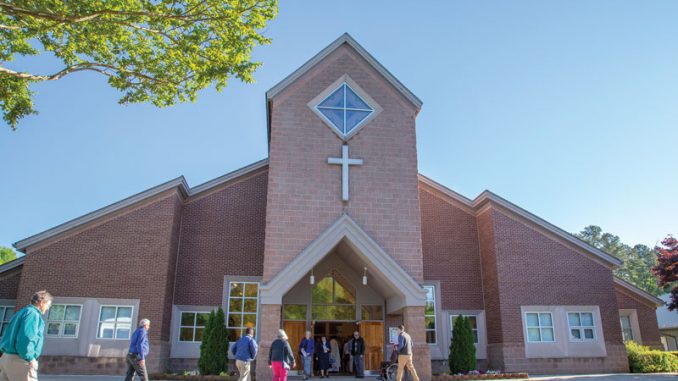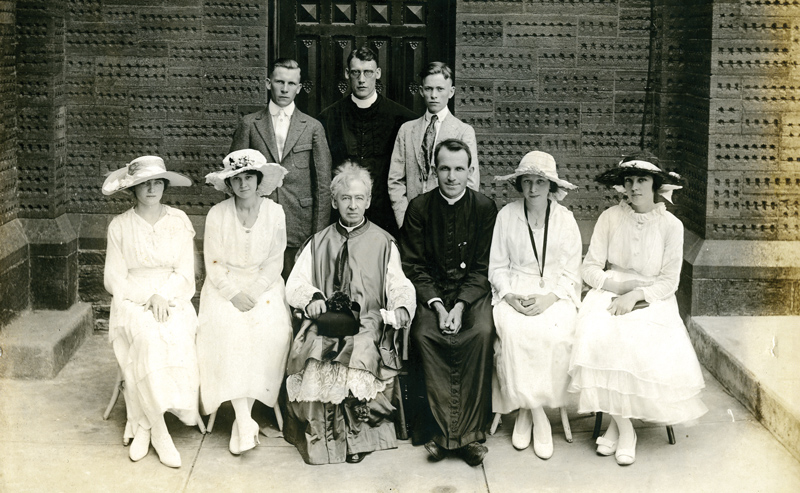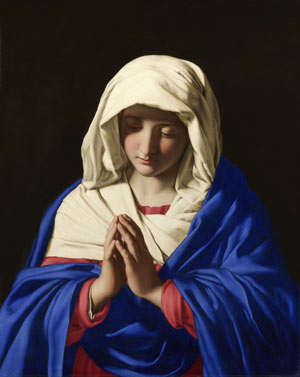
ROCK HILL—It has been 100 years since a group of about 20 Catholics met in borrowed space over a store to share their faith.
The community that started back then has grown to more than 2,000 families that make up St. Anne Church, and this year they are celebrating their centennial.
Festivities kicked off in January with a celebratory Mass, and a different event is planned for each month, culminating with a celebration on Sept. 14 that will include the opening of a time capsule buried in 1992, when the current church was dedicated. A new time capsule with memorabilia from the centennial will then be installed.
Parishioners have been working on the celebration for three years, a sign of their love and dedication to their spiritual home.
Kim Blum-Hyclak, who has attended St. Anne for 12 years, is writing a book about the parish that will include a narrative history, photos and recipes from members.
The following details about St. Anne’s history are drawn from her research:
In the early 1900s there were few Catholics in the area — only about 20 in Rock Hill and 100 in the surrounding locales — and they did not have a parish. Some traveled to Lancaster or made even longer trips to attend Mass.
In late 1918, two men died during a flu epidemic and Father William Tobin, a diocesan priest serving at St. Peter in Columbia, was called to give last rites and conduct their funerals. When he learned of the small community of Catholics with no parish, he started making the trip to York County twice a month to say Mass for them.
Since they had no church home, Father Tobin celebrated Mass in rooms above a store belonging to Joe Azer. The Azer family was one of the founding members of the new parish established as St. Anne on Sept. 15, 1919. At the time, it included York, Lancaster, Chester, Fairfield, Lexington and Calhoun counties.
St. Anne was served by diocesan priests until 1929 and then by Jesuit priests until 1934, when the Oratorians took the helm. They have served the parish ever since. Many parishioners fondly remember the late Oratorian Father William Pentis, who was pastor from 1983 to 2004. Oratorian Father Fabio Refosco is the current pastor.

The first church building for St. Anne was located on Saluda Street and was dedicated in 1920, with a rectory built next to it 1926. The rectory was converted into the first St. Anne Parochial School in 1951.
A new school building was built a few years later and quickly captured a place in South Carolina history as the first school in the state to integrate.
More Catholics arrived during World War II and in the following years as new industries blossomed. By the 1960s, the parish had outgrown the church and worship services were moved to the Oratory church and then St. Anne School’s gymnasium until the current church was built and dedicated by Bishop David Thompson in 1992.
Over the years, the parish has increased in diversity. The seeds of their large Vietnamese community trace back to the 1970s, when the parish sponsored 21 members of the Phan family who came to Rock Hill from Vietnam. They also welcomed new Hispanics to St. Anne, and now the church celebrates Masses each week in Spanish and Vietnamese.
Each year, parishioners toast their diversity with a two-day International Festival, which features food and music from dozens of countries and attracts thousands of people from the Rock Hill area.
As part of her history, Blum-Hyclak spoke to descendants of St. Anne’s original members. Paulette Hallman, a current parishioner and granddaughter of an early member, noted that a lot has happened in 100 years.
“My grandmother and all those ladies who cooked for church events way back then would not believe the church we have now,” Hallman told Hyclak. “They just would not believe it.”
In an interview with The Miscellany, longtime member Donna Willis talked about her 63 years at St. Anne, where she was baptized and married. She attended the parish school, which then welcomed her three children and now her four grandchildren.
Mrs. Willis recalled attending Mass at the first Saluda Street church, where “there were wood floors and no air-conditioning and the windows were open all the time. I can still remember walking down those hard-wood floors in my patent leather shoes.”
Willis, who chaired the steering committee for the centennial celebration, said she is proud to do the work for the church she loves.
“We have a big church with a lot of different communities, and the centennial has really brought everybody together,” Mrs. Willis said.



